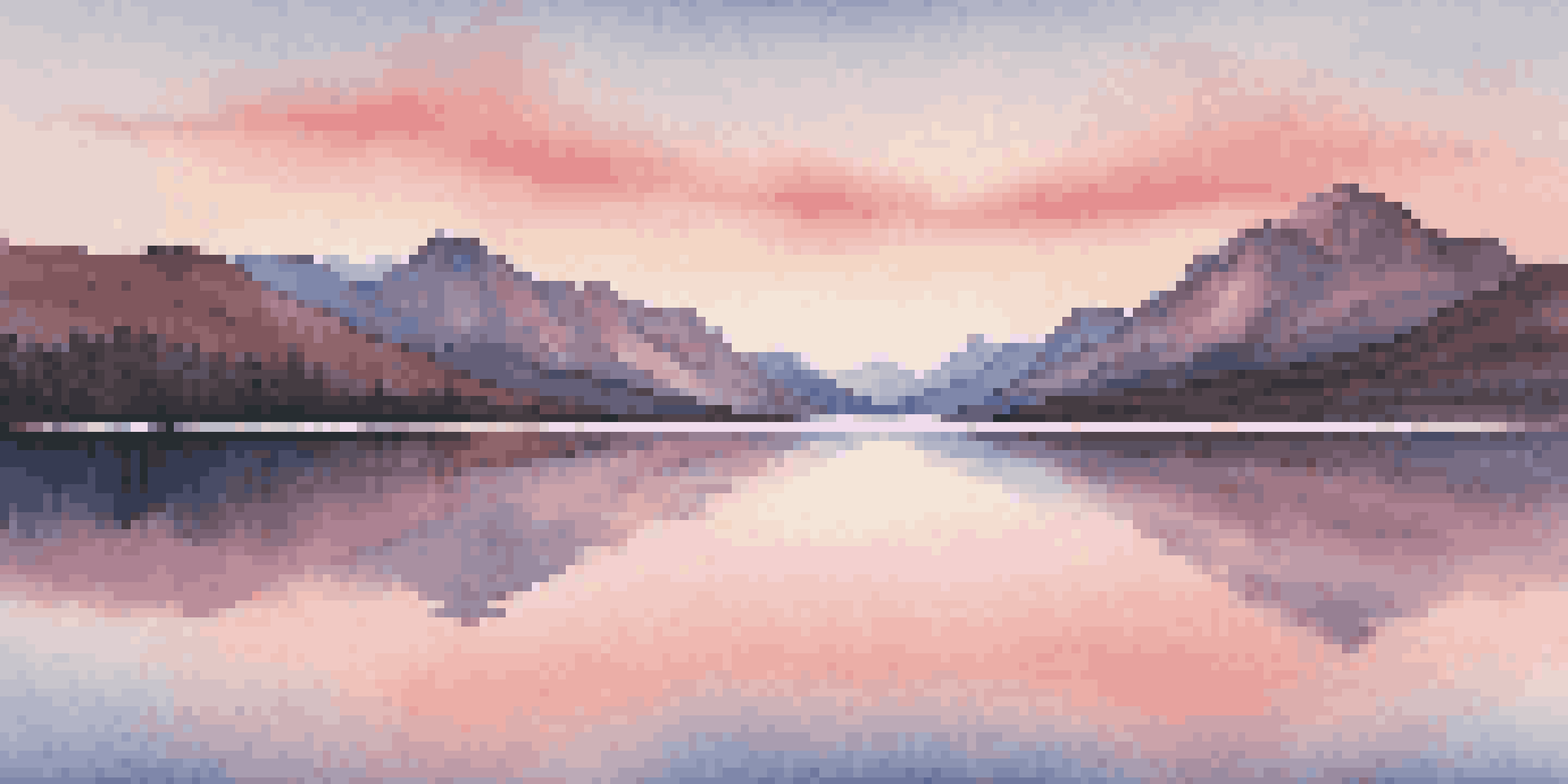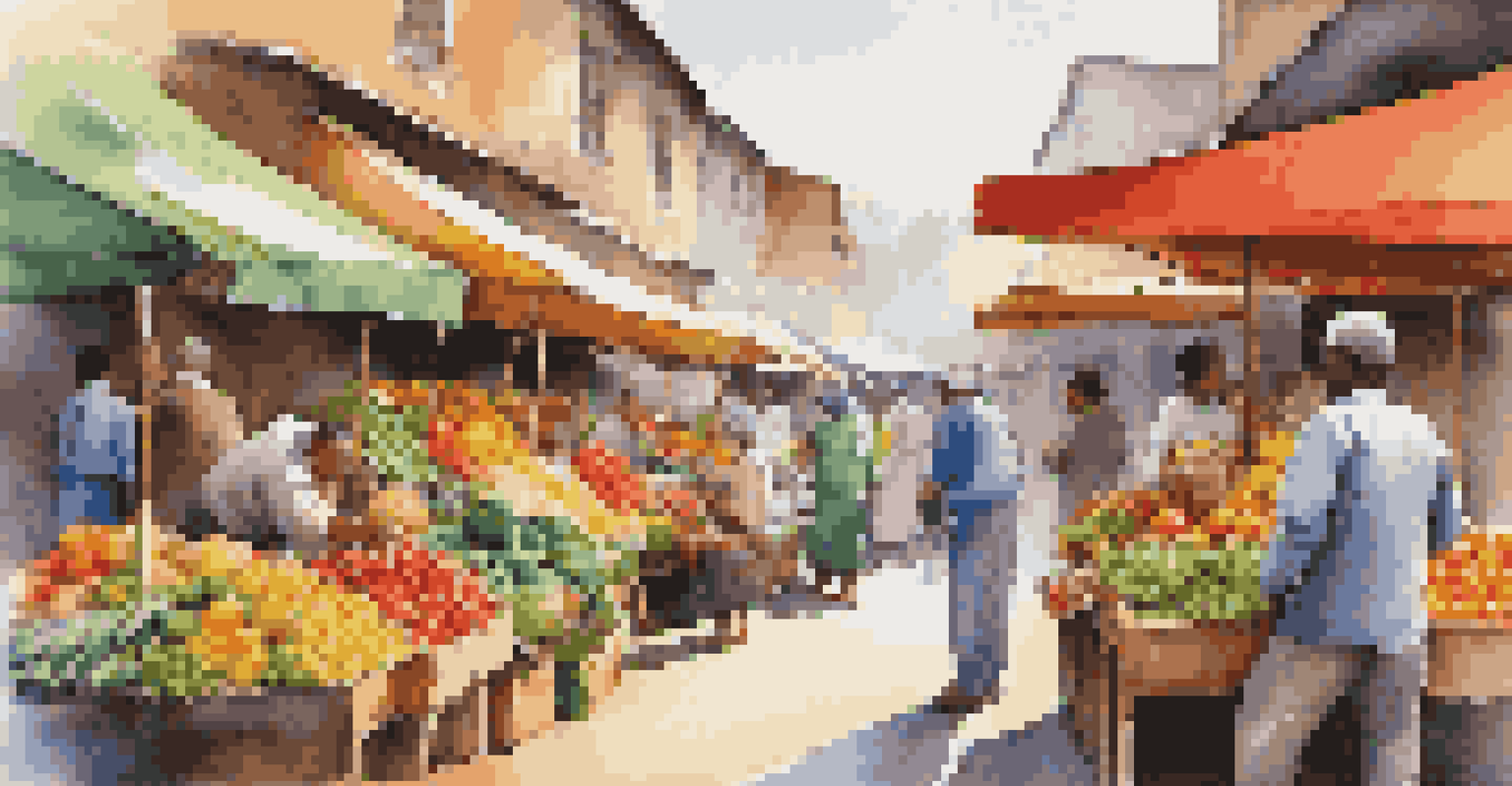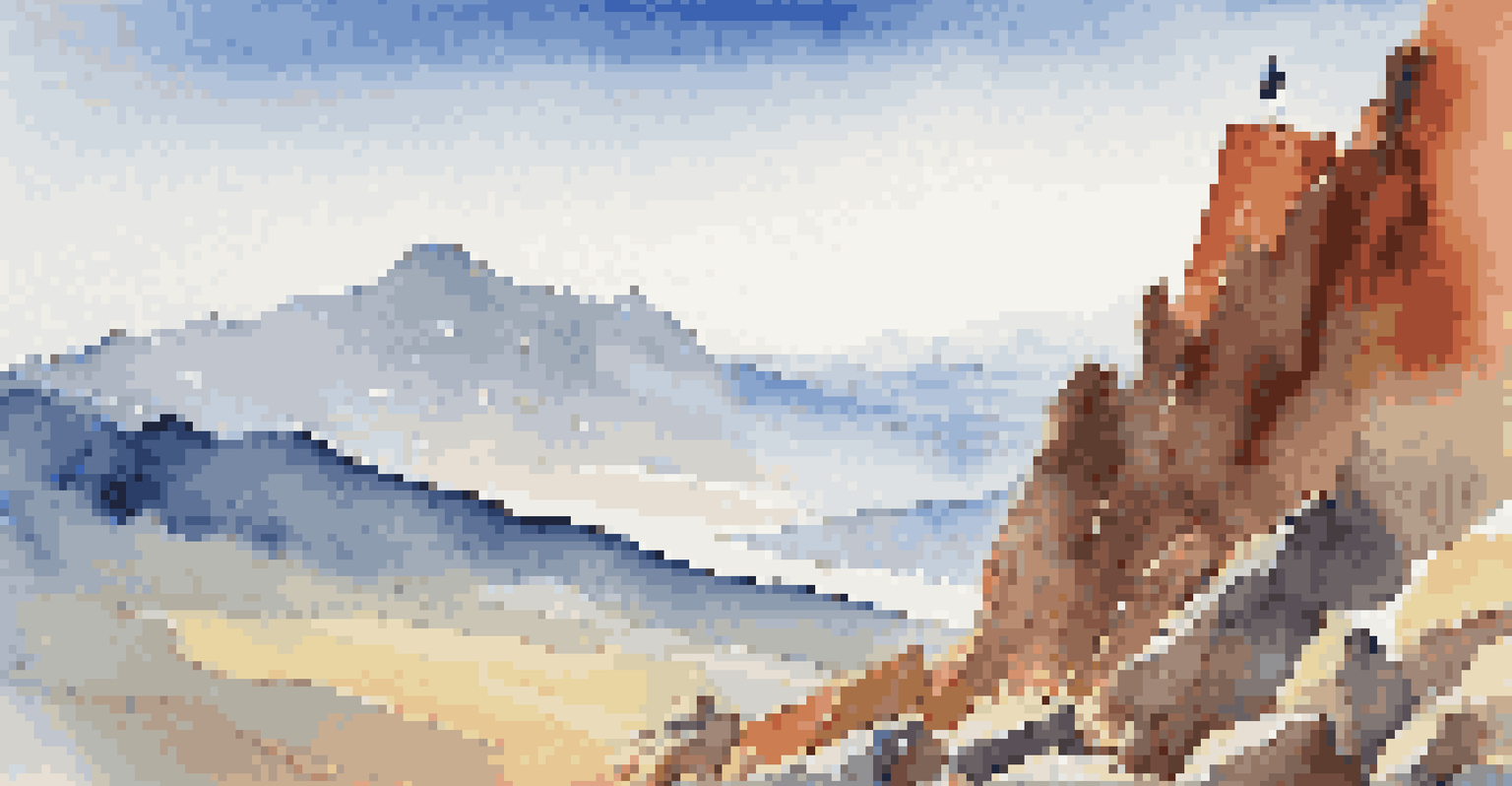The Importance of Composition in Travel Photography

Understanding Composition: The Foundation of Great Photos
Composition is the art of arranging elements within your frame, and it’s crucial for captivating travel photography. Think of it as a blueprint; a well-composed photo draws the viewer in and tells a story. Just like a well-cooked dish requires the right ingredients, a stunning photo needs careful arrangement to showcase the beauty of your travels.
Composition is the strongest way to make your point.
When you consider composition, you're not just capturing what you see, but also how you want others to feel about it. For instance, placing a subject off-center can create a sense of movement and dynamism, while centering it can evoke stability and balance. This foundational understanding allows you to express your unique perspective through your lens.
Ultimately, mastering composition is empowering. It transforms ordinary snapshots into compelling narratives, making your travel stories more engaging. So, whether you’re photographing a bustling market or a serene landscape, remember that composition is your key to creating memorable images.
The Rule of Thirds: A Simple Guide to Better Composition
One of the most popular tools in a photographer's arsenal is the Rule of Thirds. Imagine dividing your frame into a 3x3 grid; the points where the lines intersect are where your eye naturally gravitates. By placing your subject at these intersections, you create a more balanced and visually appealing photograph.

For example, if you're capturing a sunset, try positioning the horizon along the top or bottom third of the frame instead of the center. This technique not only allows for a more dynamic image but also emphasizes the beauty of the sky or the landscape. It’s a simple adjustment that can make a significant difference in the overall impact of your photo.
Master Composition for Impactful Photos
Understanding composition elevates your travel photography by transforming ordinary snapshots into engaging narratives.
While the Rule of Thirds is a helpful guideline, don’t feel confined by it. As you gain experience, you’ll discover when to break the rule and experiment with other compositional techniques. Every shot is an opportunity to express your creativity, so embrace the flexibility that composition offers.
Leading Lines: Guiding the Eye Through Your Image
Leading lines are a powerful compositional tool that directs the viewer’s gaze toward your subject. These lines can be anything from roads and rivers to architectural elements like bridges and fences. By incorporating leading lines into your photography, you create a sense of depth and movement, making your images more engaging.
Photography is the story I fail to put into words.
Imagine standing on a cliff, overlooking a winding road that leads to a distant town. By positioning your camera to capture both the road and the landscape, you guide the viewer’s eye along the journey, inviting them to explore the scene. This technique not only enhances the narrative but also adds dimension to your photograph.
Utilizing leading lines is about finding interesting perspectives and angles. Look for natural lines in your environment that can enhance your composition. With practice, you’ll start to see leading lines everywhere, turning mundane scenes into visually stunning stories.
Framing: Isolating Your Subject for Greater Impact
Framing is an effective technique that helps isolate your subject from the background, drawing attention where you want it. You can use natural elements such as trees, archways, or even doorways to create a frame within your photo. This not only highlights your subject but also adds context and depth to the scene.
For instance, if you’re photographing a person in a bustling market, positioning them within the frame of a nearby stall can emphasize their experience while simultaneously showcasing the vibrant surroundings. This adds layers to your storytelling, allowing the viewer to feel immersed in the environment.
Use the Rule of Thirds for Balance
Applying the Rule of Thirds helps create visually appealing photographs by positioning your subject at key intersections.
Experimenting with different framing techniques can elevate your travel photography. Look for unique ways to compose your shots, as these creative choices can transform an ordinary image into something truly remarkable. Remember, the world is full of frames; you just need to find the right ones.
Symmetry and Patterns: Bringing Balance to Your Photos
Symmetry and patterns can create a sense of harmony and order in your travel photography. When you find a symmetrical scene, whether it’s a building, a reflection in water, or even a row of trees, capturing it can produce striking images that are visually satisfying. Our brains are naturally drawn to balance, making these compositions instantly appealing.
For example, consider photographing a perfectly mirrored lake at sunrise. The symmetrical reflection of the mountains creates a visual feast for the eyes, captivating your audience. This technique enhances the beauty of the scene, making it feel almost surreal.
While symmetry is often pleasing, don’t overlook the beauty of patterns found in nature and architecture. Look for repetitive shapes and colors that can add interest to your photos. By incorporating these elements, you can create stunning compositions that resonate with viewers.
The Power of Negative Space: Emphasizing Your Subject
Negative space refers to the empty areas surrounding your subject, and it can be a powerful tool in composition. By allowing your subject to breathe within the frame, you create a sense of simplicity and elegance. This technique not only highlights your main focus but also conveys a particular mood or feeling.
Imagine capturing a lone hiker standing on a vast mountain range with an expansive sky above. The vastness of the negative space emphasizes the solitude of the hiker, enhancing the emotional impact of the image. This intentional use of space can evoke feelings of freedom, loneliness, or adventure.
Embrace Negative Space for Focus
Incorporating negative space allows your subject to stand out, enhancing the emotional impact and simplicity of your images.
Incorporating negative space encourages you to think creatively about your composition. It’s a reminder that sometimes less is more, and that the empty spaces in your photos can be just as important as the subjects themselves. Embrace this technique to create striking, memorable images.
Experimentation: Finding Your Unique Compositional Style
As you grow as a travel photographer, don’t shy away from experimentation. Trying out different compositional techniques allows you to discover what resonates with your style and enhances your storytelling. Each destination offers unique opportunities, so embrace the chance to break away from the norm and explore new perspectives.
For example, you might find that you prefer wide-angle shots that capture expansive landscapes, or perhaps you enjoy the intimacy of close-up details. Whatever your preference, experimenting with various compositions can lead to surprising and delightful results. The key is to remain open to new ideas and techniques.

Remember, photography is an art form, and there are no strict rules. Allow yourself to play, make mistakes, and learn from them. Your unique perspective is what will set your travel photography apart, so don’t hesitate to let your creativity shine.